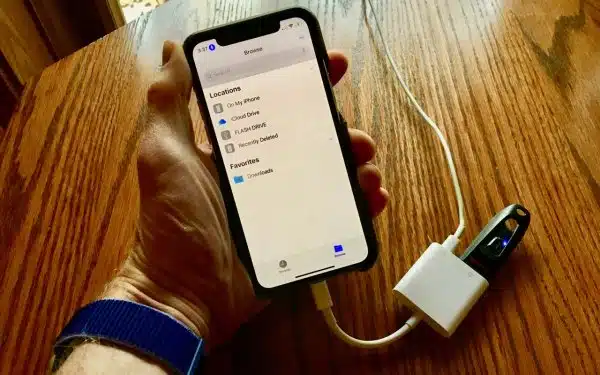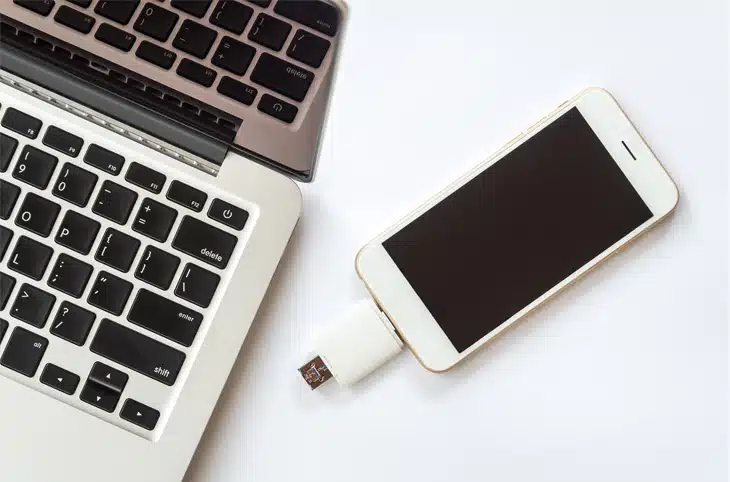Table of Contents
How to Connect iPhone to Laptop via USB?
How To Connect iPhone USB? Connecting your iPhone to your laptop via USB is a simple and convenient process that allows you to transfer files, sync music, and perform other tasks.
The specific steps and software required may vary slightly depending on your computer’s operating system and versions of iTunes and iOS.
Start by ensuring that you have the correct cable. You will need a Lightning or USB-C cable that is compatible with your iPhone and your computer.
1. Check the USB port on your computer:
A cable connection between an iPhone and a laptop can be a convenient way to transfer files, sync content, or use Continuity features. The exact steps and software required will vary depending on the version of iOS, iTunes, and macOS that you’re using, but the general process should be similar for most users.
To start, ensure that your computer has a working USB port and the appropriate cable. Most computers have a USB Type-A port, while newer models may include a USB Type-C port. If you’re using a Type-C cable with an iPhone, make sure that the cable is genuine and certified by Apple to maintain compatibility.
Once you have the proper cable, plug one end into your computer and the other into your iPhone. Your iPhone will display a message asking for your permission to trust the computer – unlock your device and tap “Trust” to allow the connection to proceed. Once the connection is established, you’ll be able to access your iPhone on your computer as a disk or drive, depending on your operating system.
2. Connect the cable:
Using a USB cable to connect your iPhone to your computer is a convenient and secure way to transfer files, backup data, sync content, and perform other tasks. In addition, USB offers a more reliable connection than Bluetooth, which can experience interference or lose signal during transfer. To establish a successful connection, you’ll need a reliable cable, iTunes, or other software to manage your iPhone’s files, and Windows drivers for the laptop’s operating system. You should also make sure that your computer’s Internet connection is stable and that any security software or antivirus programs are disabled.
The USB cable that came with your iPhone will have one end with a Lightning or USB-C connector and the other end plugs into the charging port on the bottom of the device. The iPhone should recognize the connection and display a “Trust This Computer” notification on the screen. After confirming the connection, you can work with your iPhone files in Finder or use other features, such as Handoff, AirDrop, and Continuity Camera. You can even set up a wireless connection using Wi-Fi.
3. Connect your iPhone:
The USB cable is one of the most common ways to connect your iPhone to your computer. This method allows for file transfer and synchronization between your device and the computer. It also gives you access to some of your device’s features, such as AirDrop and iCloud.
If you’re having trouble connecting your iPhone to the computer, try disconnecting it from any other USB devices and accessories.
You can then reconnect your iPhone and make sure it’s plugged in securely. You can also try a different USB port on your computer or try using a different cable.
Another way to connect your iPhone to the computer is through a Bluetooth connection. This method requires a laptop or desktop computer with Bluetooth support, a USB cable, and the latest version of iTunes. You can also use third-party software or apps for an even smoother integration between your iPhone and the laptop or desktop.
To use this method, you’ll need to download the app “Link to Windows” from the App Store and follow the on-screen instructions. Once you’ve linked your iPhone to the computer, you can open iTunes to view your device details and connect your iPhone to Wi-Fi.
4. Open iTunes:
If your iPhone isn’t showing up on your computer, it may be because of a problem with your USB cable or the USB port. Try using a different cable and see if your phone shows up. You can also try updating iTunes and turning on Bluetooth.
If you have a Windows laptop, you can use File Explorer to access your iPhone’s files and folders. Just press Win+E, and then find your iPhone in the list of devices and drives. Once you’ve accessed the files, you can move them to your desktop or anywhere else.
If you have a Mac with macOS Catalina or later, the name of your connected iPhone appears in the sidebar of any window in Finder. You can click the icon to view your iPhone’s details. If you have an older version of macOS or a PC, you’ll need to open iTunes. You can do this by downloading the app “Link to Windows” from the App Store and scanning a QR code. Follow the on-screen instructions to connect your iPhone to the computer and start transferring files.
5. Connect your iPhone:
If you are unable to connect your iPhone to the computer with a USB cable, there may be an issue with your computer or its USB port. Try restarting both devices or using a different USB cable. If you continue to have trouble, contact Apple Support for further assistance.
Another option for connecting your iPhone to the computer is to use iCloud. This method requires a WiFi connection, an active Personal Hotspot on your iPhone, and iTunes 10.5.3 or later on your computer. You will need to enable iCloud Drive on your iPhone, and make sure that all files are synced to the iCloud before disconnecting your device.
You can also connect your iPhone to the computer wirelessly, if it is compatible with Bluetooth 2.0. To do this, you will need a USB cable and a Wi-Fi connection. First, turn on your Hotspot on your iPhone, then select the Wi-Fi network on your laptop. Open the iCloud settings on your laptop, and then follow the on-screen instructions to connect your devices. Once connected, you can browse your iCloud Drive files on the iCloud website.






Add comment